The King of Fighters is my all-time favorite fighting game franchise hands down, but I’ve never been what some would call a purist. Some fans spend a fortune trying to get original Neogeo hardware to play games on, but I have always played pretty much anything but the original hardware unless I come across it at an arcade. KOF 11 has a great PS2 port and 13 and 14 have solid multiplatform releases, as KOF 11 is when SNK really started upping their game in bonus content for home versions. The games before 11, however, have been all over the place over the years, with many different ports that can give a player a noticeably different experience and range of content despite the core games remaining, be it in presentation or bonus features.
I very much want people to play all the KOF games that don’t make you want to ram a nail through your skull (i.e. not KOF 94 & 95) and there are so many different ways to get them now that it can be tricky to know which ones gives you your money’s worth and is the best way to play them. For the sake of helping with such decisions, and for an interesting little look at the differences, I have written this little guide on a few of the different ports available for the KOF games before KOF 11.
The Orochi Saga Collection
Before Wiiware started making the games available, this was the only feasible way to play the first KOF games at home and it’s where I got my start not only in KOF, but in fighting games as a genre. The Orochi Saga Collection for the Wii, PSP and PS2 bundles the first 5 games on one disc. Two of them are to be avoided at all costs.
Since I kept having fun playing the games on this collection (well, 3 of them) for years, they’re obviously serviceable enough ports, but with the ports that have come out since, it’s not as much of a must-have as it once was because it doesn’t have a lot else to offer. Each game in the collection is a direct emulation of their arcade version, with the collection’s menu tying them together with little in the way of options and no “how to play” videos like the arcade would play. It does have some varied control options on the Wii, a pause menu with move lists and a training mode, but all the training mode does is plop you in an arena with a random, unmoving opponent with regenerating health. It’s not much.
The Orochi Saga Collection’s saving grace is its impressively sizable gallery containing lots of artwork and the arranged music, all of which you can unlock by beating challenges utilizing KOF 98. Before KOF 14 it was probably the biggest gallery any KOF game ever had.
If you’re going to get the Orochi Saga collection, the Wii version is the one to get. The PS2 and PSP versions have load times between rounds in each game, something the Neogeo never had. It’s only a second or two so it’s not that pace-breaking, but it does make the Wii version objectively superior, albeit with its own little quirk.
Nintendo has a concern about potentially causing seizures so in any Neogeo game that has it, rapidly changing colors are changed. This includes hit flashes (the screen flashing white to emphasize impact), the final KO screen that normally flashes white and red and…
HEALTH AND SAFETY
WARNING!: If you are going to play The King of Fighters 97 and are epileptic, play it on the Wii!
I am not being facetious. The final boss, Orochi, has an attack I like to call the epileptic seizure attack. For this attack, Orochi glows blue and slowly pulls you toward him to rip out your soul and crush it (perfectly survivable, naturally). I guess SNK thought that was too easy to avoid so they decided to distract the player by making the entire screen rapidly flash white as he does it! I am not epileptic and even I have gotten a headache from that sometimes so I can only imagine how bad that is for people who are! How this has gone without controversy floors me when I put it up there with Electric Soldier Porygon and Screenslaver!
Fortunately the flash is taken out of the Wii version. Unforunately, apart from the Wii Virtual Console version, it is the only one that does so, to my knowledge.
Overall, the Orochi Saga is a solid way to get the first 5 games at a good price, but it’s not the best way to play them. That the opening is a series of still images sort of prepares you for something very basic.
That One PS1 Port
The PS1 had a good selection of fighting games, like the Street Fighter Alpha games, the original Guilty Gear, the first 3 Tekken games and SNK games like the KOF series. Of the KOF ports, there’s only one that’s readily available and that is the one for KOF 99, available on the PSN store as a PS1 classic. It’s… Interesting.
The PS1 version of KOF 99 provides some neat extras. There’s an art gallery depicting concept art, including alternate design ideas for characters and even alternate sprites, a cutscene viewer and, in what has become a staple, extra ending artwork for beating the game with a specific team. Krizalid’s face for the vs. screen is also shown for his second phase, where in the original it’s shown as a shadow.
The game itself is where the problems begin. The thing that sticks out the most is loading times. Before every single round the game has to take a few seconds to load in the characters. This can understandably be pretty annoying in the long haul.
The audio is also very odd. The game uses the arranged soundtrack, which sounds crystal clear and is easily one of the most rocking soundtracks in the franchise, but it’s in stark contrast to extremely compressed, muffled voices and sound effects, creating a weird disconnect where it sounds like the fight is in the distant background to the music. What’s more, each music track has two starting points it alternates between for each round, since it has to stop to load instead of the music continuing to play uninterrupted between load-less rounds in the original. No analog control either.
Needless to say, the PS1
The PS2 Ports
The PS2 doesn’t have the shortcomings the PS1 had and it is officially my KOF machine now because of how many good KOF games are on it. KOF 2000-2003 were all ported to the PS2 and have some standout features. Of them, the only one I don’t have is 2002’s. If I ever get it, I’ll edit it into this article.
2000 and 2003 have the option to use the arranged soundtrack. For reasons I cannot begin to guess, KOF 2001 does not have this option even though it could have somewhat salvaged the infamously bad music. The arranged soundtracks (without the stop-and-go of the PS1 versions) make a huge difference for me. No longer limited by the Neogeo’s hardware, the music goes from awesome to mind-blowing and the sound mixing makes it so it doesn’t sound out of place from the Neogeo sound effects. This helps KOF 2003 in particular because I think its Neogeo soundtrack is jank, but when it’s done with real instruments it comes together much better.
KOF 2000 and 2001 also added a few unlockable strikers (as if 2000 didn’t have enough) and 2000 includes a little gallery called “memories”, which is just the openings to the KOF games before it you can unlock. That’s a pretty worthless bonus, but it was probably neat before video sharing on the internet got big.
Visuals get some upgrades in the PS2 ports as well. Pixel art for KOF 2000 and 2003 are all smoothed out and look sharper than on the Neogeo, but 2001’s port goes a step further by completely changing the character artwork and the opening.
That opening demonstrates that the PS2 port of 2001 is a lot darker in color than its rather bright Neogeo counterpart. Stages are given a more shaded makeover and a some of the redone character art makes characters look like evil counterparts from a shadow dimension. Still, it’s an improvement from the rather muted look of the original 2001 so I consider the PS2 port the best way to play it.
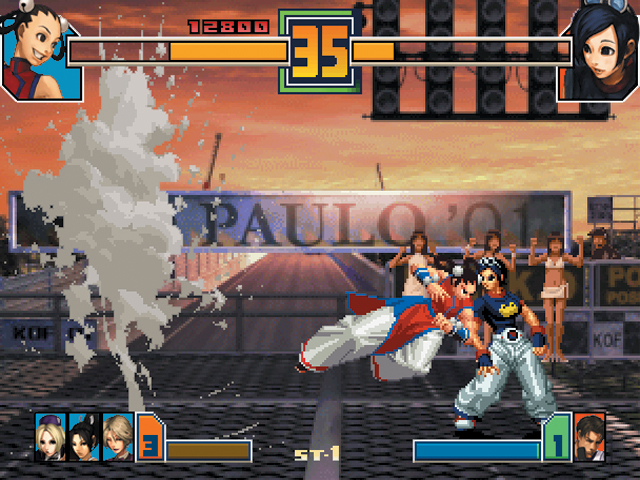 |
| This area of one of stages is added to the PS2 version. |
2003 on the PS2 does have something else in common with 11 though: it has a gallery in which you can view the cutscenes, concept art and, if you beat them in survival mode, character art. The snazzy 3D backgrounds and arranged music already did it for me, but a more substantial gallery than just game intros elevates KOF 2003 to being my favorite of the pre-11 PS2 ports, which is impressive because the game itself isn’t one of my favorites.
Keep in mind, however, that before 11, all these PS2 ports did not support the analog stick and require the use of the control pad, meaning you’d best cover your hand with a glove or something to avoid blisters.
Kof 98: Unlimited Match also got a PS2 port and both it and 2000’s are available on the PS4
Do not buy 98UM on the PS4.
Putting aside that I hate the PS4 on principle, I’ve played its port of the PS2 version of KOF 98UM and egad! I thought the stories about the input lag were exaggerated, but they’re not! It has more than a half second of input lag! For one of the fastest fighting game series out there, that makes the game practically unplayable! I can’t even adjust to it! It is impossible to make combos or time your attacks! It’s a fatal flaw that ruins the gameplay!
It’s a shame too because it has some fantastic features that are above and beyond the other ports. It has the 3D backgrounds, arranged music and an even bigger gallery with all sorts of stuff to unlock. The problem is that the only way you’re going to unlock any more than what you get at the start is by playing the game and that means wrestling with the worst input lag I have ever seen in a fighting game! Some might find the port worth it for the extra content, but it is not a good way to play the game. The PS4 port of Fatal Fury Battle Archives Volume 2, another PS2 emulation, unfortunately suffers from noticeable input lag as well, albeit not as badly.
Thankfully the PS2 port of KOF 2000 on PSN works very nicely with next to no input lag and adds a few screen options, like scanlines, to the options menu.
Some Retro Tech
This is a bit off-topic, but to make playing the KOF games on an old system like the PS2 a little better, I have a few devices to help it work with more modern technology to suggest for those who need it. One is a cheap little HDMI converter from a company called Old Skool. For 20 dollars all you have to do is plug in the PS2 component cables in one end, the HDMI cord in the other and the power cord to a USB power source (like a nearby console). It has some issues with contrast, but for a colorful game series like KOF it doesn’t affect much. It’s not an upscaler or anything fancy, but that 20 bucks was worth it to play old systems on modern TVs without hassle and I can confirm it works.
I also have a controller converter from the company known as Brook. This controller converter plugs into the PS2 controller slot and allows you to use a PS3 controller for it, even wirelessly. I combine that with the Gamelinq to convert my Neogeo Arcade Stick Pro into working as a PS3 controller and I can use it on the PS2 KOF games. Despite having 3 devices leeching off each other to make that work, I tested for input lag and there doesn’t seem to be any. Like the converter, this is my official statement: it works. |
| I also got a keychain. |
That I was willing to invest in so much just to play on my PS2 shows how much I like to play KOF games on it.
The Dotemu Ports
 |
| My face when Dotemu is brought up. |
Dotemu has become notorious among Neogeo fans for making some of the shoddiest PC ports of Neogeo games, sold on both Steam and the Humble Bundle store. Their KOF ports are only on the Humble store, probably because they aren’t even good enough for Steam’s low standards.
Dotemu ports are the Neogeo arcade ROMs slapped into an emulator, and not a very good one. The buttons are bound to some awkward keys on the keyboard and awkward buttons on a controller, none of which can be changed. Every single port mentioned in this article has customizeable controls except Dotemu’s. Not helping is that the sound mixing in the game proper isn’t optimal, though you’d only really notice if you’ve played other ports. There’s no extra features either, not even in the tiny number of game options. At best these ports are functional if you can get used to the uncustomizeable controls it forces on you, but even then people have reported bugs.
I do not condone piracy, thus I am not typically amused when
someone says they are using an emulator to play a game, because although
emulation isn’t illegal, almost every single time anyone uses an emulator, they
are using an illegally copied
Since Dotemu ports are so sloppily made, it is shockingly simple to just go into the game’s file, pull out the ROM and put it into a Neogeo emulator like Winkawaks. You bought the ROM, so you didn’t steal anything. Hell, you don’t even copy it if you just drag it from one folder into another. I’m no lawyer, but I don’t see a problem with that.
That’s right. The best part of the Dotemu emulations is that you don’t have to play them.
Pardon me if I’m not rushing to play Streets of Rage 4.
The Code Mystics Ports
 |
| Teach us, oh great gurus! |
If Dotemu is the sworn enemy of SNK fans, then Code Mystics is the heroic pro wrestling face. You can expect the best when it comes to them.
The earliest Code Mystics ports I’m aware of are for two of
the best KOF games for multiplayer: KOF 98: Ultimate Match: Final Edition and
KOF 2002: Unlimited Match. They were ported
to the Xbox 360 and the later to PC.
They’re just home ports of the arcade versions with online play. There’s no gallery or arranged music like the
PS2 ports. The only extra is that KOF 98
Unlimited Match: FE has the original Neogeo KOF 98 on it. Curiously, I’ve read the same thing was
offered in the PS2
Even without bonus content, they’re still the KOF games with some of the biggest rosters and the online play makes them must-haves. To boot, both are well optimized and the lack of the console version’s features is my only criticism.
The PC version of 2002UM even has every character at the start, unlike the 360 version, where you have to undergo the grueling task of beating every single character in survival mode, in the KOF game with the most characters in the franchise, including the hardest bosses in its history, without losing once, to unlock them all.
KOF 2002UM’s PC port apparently also got something called rollback netcode, which I guess is something that makes it play online better and people were making memes about it, but I couldn’t really tell the difference.
| Ok? |
A few years after those phenomenal ports, Code Mystics started making more Neogeo ports for the PC and Vita, like Garou: Mark of the Wolves, The Last Blade 2 and KOF 97, which got titled The King of Fighters 97: Global Match.
True to its name, Global Match has online play, its biggest feature. Like the other Code Mystics ports, online play works nicely, if you really want to bother playing a game with a far smaller roster than KOF 98 online.
Like the previous Code Mystics ports, Global Match doesn’t
have a lot in the way of features. It
does have trophy/achievement support and a gallery with some high definition
art and any cutscenes you’ve unlocked, but otherwise it’s simply a very good
It really says something that the Dotemu port of Garou: Mark of the Wolves was taken off the Steam store and replaced with Code Mystics’ port.
The Hamster Ports
A few years back the company known as Hamster started releasing Neogeo games on the PC (the Microsoft Store, specifically), PS4 and Switch as part of their “ACA Neogeo” line. These ports are kind of a middle ground; they’re straight ports of the arcade versions, kind of like Dotemu’s, but have more effort put into them, just not as much as the Code Mystics ports. The only bonus content is Caravan Mode and High Score Mode, which are based around getting high scores for an online leaderboard.
They do have a healthy number of settings, at least. There are standard settings like difficulty and volume control, but also a wide variety of scanlines, the option to show the level and/or credits on the bottom of the screen, customizeable controls and it even has the option to show a wider view of the game that the arcades normally cut off on the sides.
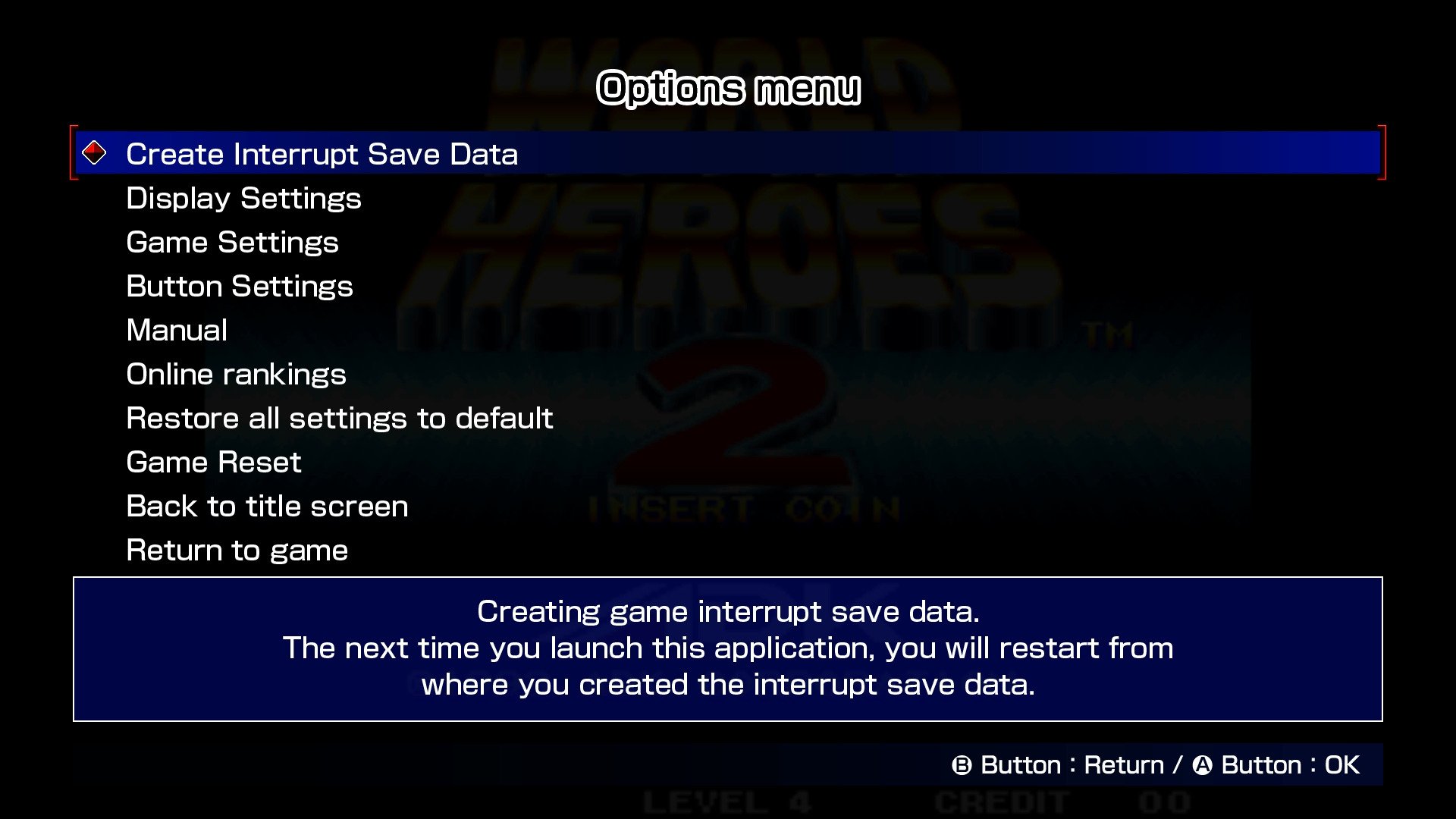 |
| This is for World Heroes 2, but it's the same deal across the ACA Neogeo series. |
Basically the Hamster ports give you a solid emulation of the arcade game, a switchboard/debug menu for the arcade game, the ability to suspend the game so you can continue later and a digital manual that adequately explains the gameplay and has the move lists.
There’s nothing noticeably bad about how the ports themselves run so they’re overall decent. Good, but not great. A 7 out of 10. One thumb up. I was satisfied with the very basic Wii Virtual Console versions back when they were available and these are the same price, but have more to offer. That’s a winner in my book.
The Neogeo Arcade Stick Pro
I’ve already gone over what the Neogeo Arcade Stick Pro has in my review of it, but to reiterate, the thing has some fantastic emulations of the home versions of its 40 games, including 6 KOF games: 95 (do not play), 97-2000 and 2002. It has no bonus content, but the audio and visuals are of the highest quality without being totally redone, I like the pixel smoothing option (which seems to be an unpopular opinion) and each game has 4 save state slots. It is a great way to play the KOF games that are on it, plus the stick itself feels great to use with a responsive microswitch-equipped joystick and a sturdy build. It will not disappoint. Just remember to switch the language to English in each game’s options menu.
It makes me happy that there are so many ways to play the older KOF games nowadays because playing each game in order allows you to experience the different changes, characters, sights, sounds and stories beyond just the popular ones. With these overviews I hope players will be able to do that in the way that best suits their preferences.
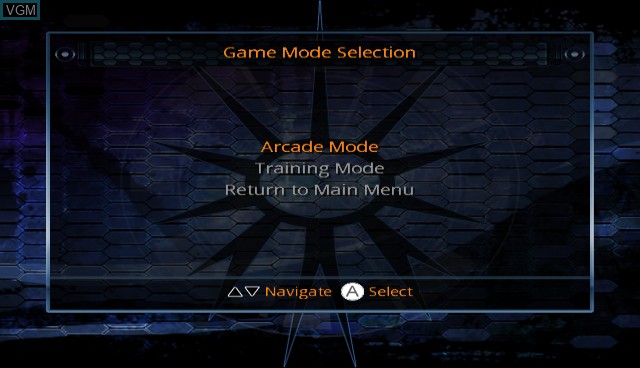



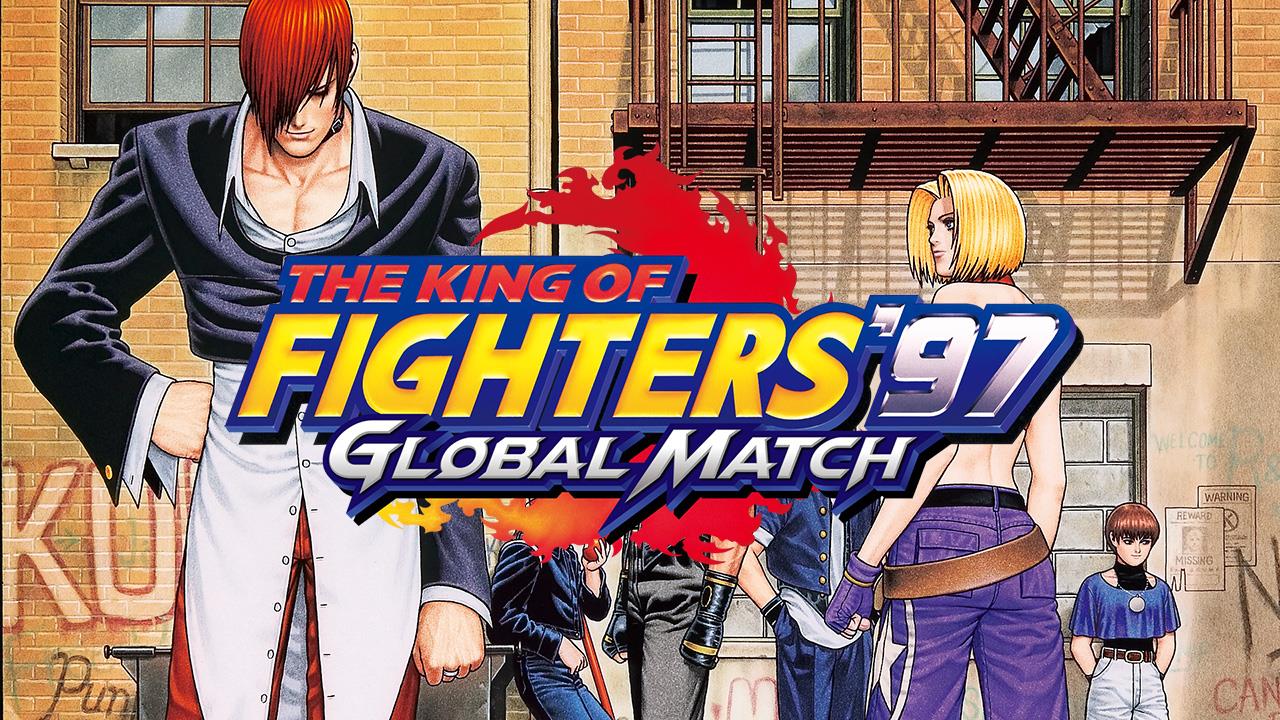
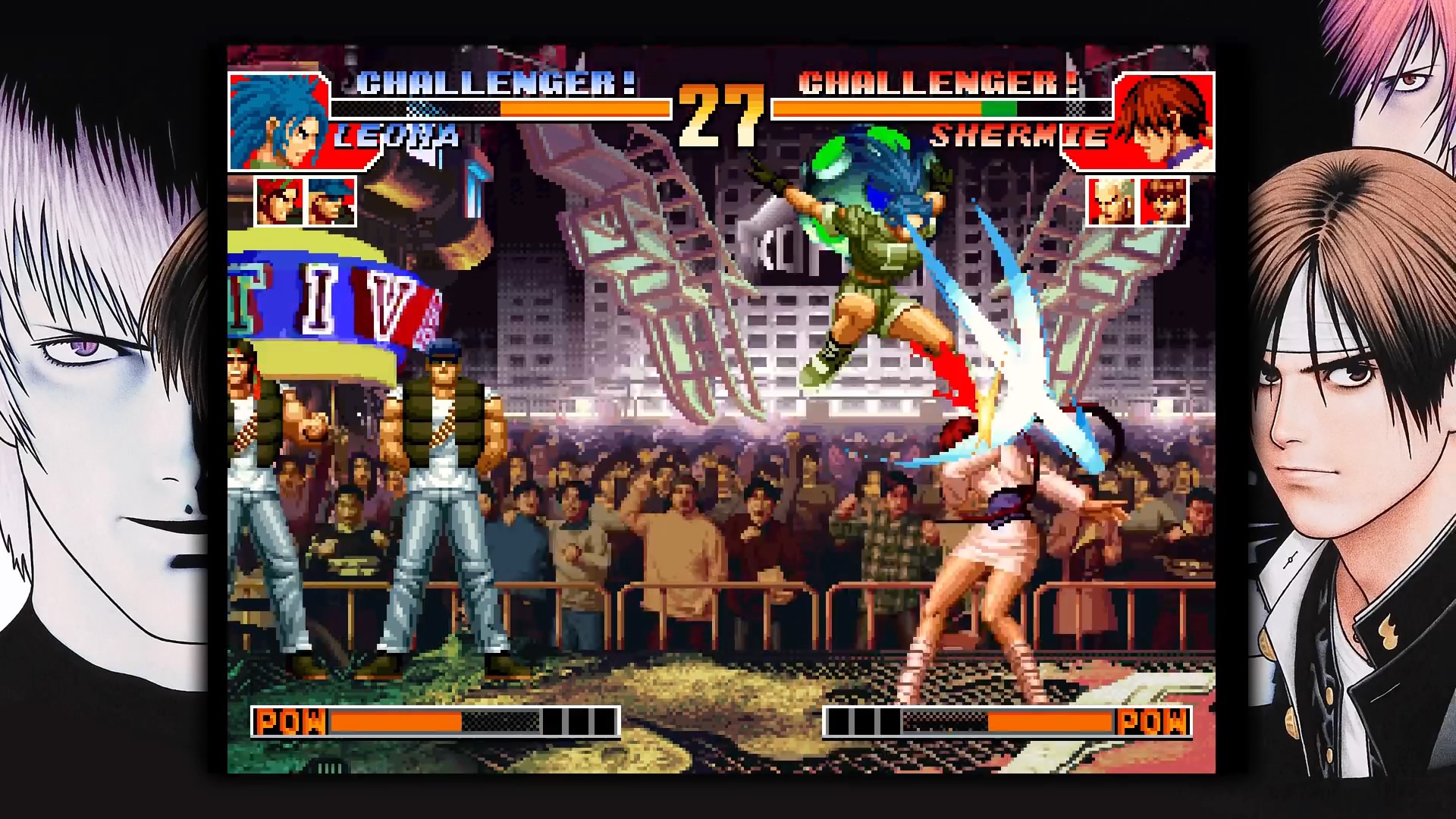


I love the PS2 port of 2003. Check out the Orochi and Nests collections for the PS2, those use the arranged soundtracks for the games in both compilations. What's more interesting is that the Nests collection uses the Dreamcast ports of the games, which have a lot of cool extras, especially for Kof 99 and 2000.
ReplyDelete